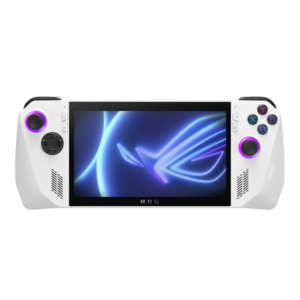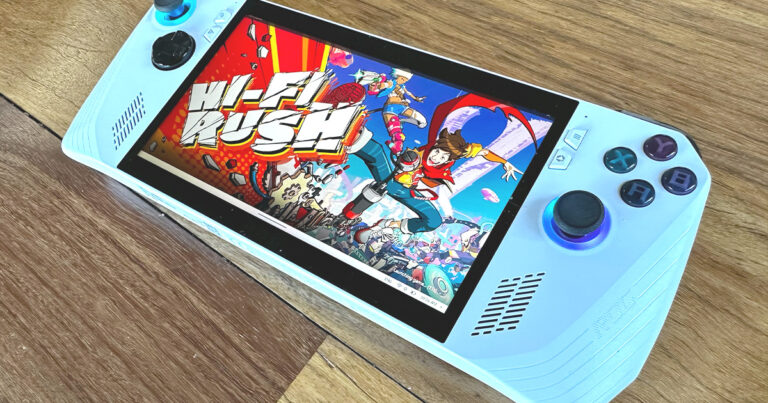The ASUS ROG Ally takes a crack at the Steam Deck and settles at second place.
ASUS ROG Ally: Powerful portable
How much does the ASUS ROG Ally cost in Australia?
The ASUS ROG Ally retails for $1,299 in Australia but it's currently on sale for $1,099. Let’s put that into context for a moment. Firstly, you can get a Nintendo Switch OLED for $449; a weaker console, sure, but the OLED display is nothing to sniff at. Now consider Valve’s Steam Deck. This portable PC trendsetter starts at $779 in Australia (through Kogan.) And you can find it even cheaper if you know where to look.
Okay, so the ROG Ally is going to cost you roughly $1,000 to $1,300 Australia (unless you find a hot discount, or get it second-hand.)
Let’s take a look at what that price puts in your hands.
Power and performance
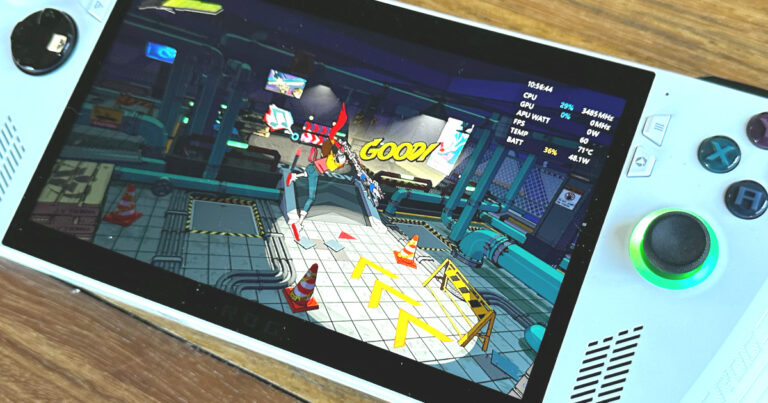
Friends, let’s get the good stuff out the door first. You did, after all, come here to have your investment justified by an authoritative source (Reviews.org Australia.)
If you’ve already committed, don’t look back. For all my nitpicks that follow, the ASUS ROG Ally is truly a powerhouse portable gaming device. Stronger than the Steam Deck, and more robust than Ayaneo. Don’t stress. You’ve spent your money well.
Playing Bethesda’s surprise 2022 hit HI-FI Rush at a consistent 120 frames-per-second… on a handheld device in bed is truly what dreams are made of.
Less frantic games, like Powerwash Simulator, might not reach the same dizzying heights when it comes to frames-per-second, but they still look mighty tidy on the ROG Ally’s 7-inch IPS display.
Skirmishes in Halo Infinite are just as snappy on the smaller display, but the slightly cramped controls can start to feel cumbersome after longer play sessions, particularly with fast-paced shooters– not to mention the weight of this thing, close to double that of the Switch OLED.
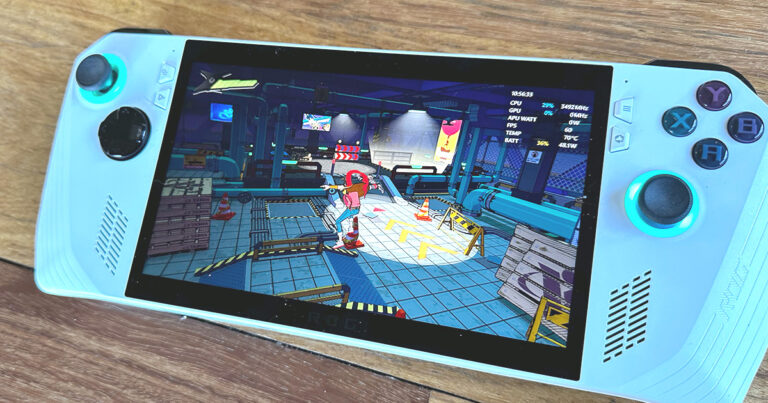
With that said the freedom of Windows 11 means you can easily connect a USB-C display adapter and a wireless controller and/or keyboard and mouse if you mean business. Despite not coming with any sort of dock like the Nintendo Switch, I was surprised to find out just how easy it was to run the ROG Ally through my regular gaming monitor– it is, after all, running a desktop version of Windows 11.
If you wanted, you could technically use the ROG Ally as a fully operational personal computer for work or play. Nobody is stopping you. I did just that for a hot minute when I couldn’t be bothered tracking down my work laptop one morning. And guess what, I would have been none the wiser.
But in the end, it’s that same quality that holds the ASUS ROG Ally back. The freedom of the full Windows 11 experience in a handheld has its benefits but it seems ASUS has misinterpreted the most important, fundamental aspect of its handheld competitors: the simplicity.
I can put my Switch in rest mode and confidently expect to pick up where I left off when I turn it back on. The Switch’s included HDMI dock, a simple piece of hardware, makes hopping from handheld to couch-based play seamless. Sure, Valve’s Steam Deck is a little more complicated if you want to push its limits but you don’t need to be a computer whiz to get the most out of it.
The ASUS ROG Ally, on the other hand, will challenge the patience of the most technologically proficient.
UI and the handheld Windows 11 experience
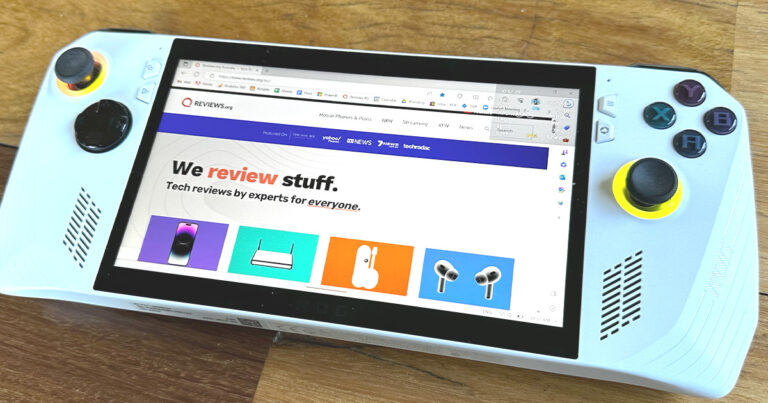
Now, I know this is largely a PC problem, and that any Windows-based handheld will experience the same issues, but the last thing I want to do when sitting down for a session of Halo: Infinite is to have to troubleshoot abstract system issues just to get a game playing at an acceptable frame rate. I had the ASUS ROG Ally for nearly three weeks, and half of that was spent waiting for major software updates while the other half was spent getting to the bottom of some critical errors with game launchers like Game Pass.
Even when I had solved the most obvious problems, there were regular head-scratchers that made an unpleasant experience plain awful. Such as one occasion where, deep in Windows’ layered and confused settings menus, I could hear the faint noise of guns and grunting coming from the ROG Ally’s speakers. Turns out the gamepad inputs I was using to troubleshoot a PC issue in handheld mode were being recognised in a game window invisible to me at the time. Nightmare stuff.
Much of the blame is on Windows, of course. I’m sure anyone who has used a Surface over the last few years can attest to the wonkiness of the Windows Home 11 on ARM but Windows 11 Home integrated with ASUS’ own Armoury Crate SE seems to be a whole other flavour of annoying.
In a perfect world, you would power on the ASUS ROG Ally, launch into a stable Armoury Crate launcher, and begin a game without ever reAlly needing to visit a Windows 11 desktop screen. That’s far from the case here. Not only did Armoury Crate fail to identify all of my games installed through the Game Pass app, but it also failed to launch the ones it did, regularly. And that’s just the basics.
Realistically, if I’d just spent over one thousand dollars on a Steam Deck alternative, I would expect all of the critical updates funnelled through a single, user-friendly interface. Not the case here. You better be checking for Windows updates, Armoury Crate updates, and launcher updates via the Microsoft Store every hour if you ever want to play a video game. *long exhale*
Display
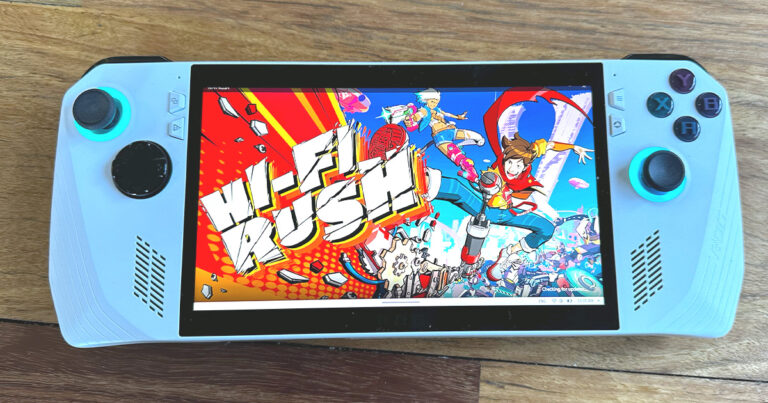
Performance and general UI weirdness aside, the ASUS ROG Ally’s display is something to behold. Okay, it’s no OLED display (but it feels like a matter of time,) but the ROG Ally whips the competition in a few meaningful ways. It’s a higher resolution Full HD (1920 x 1080) display for starters. But it also supports a 120Hz refresh rate, and you don’t have to look too hard to take full advantage of it either. Public relations for the ROG Ally’s competitors might tell you that the resolution bump is insignificant on such a small display. Well, I don’t know what to tell you, champ, this thing’s screen trumps any Steam Deck or Switch I’ve seen with my own two eyes, no question. The higher frame rate is particularly impressive where it matters– say with HiFi Rush’s fast-paced rhythm action.
When ASUS eventually gets around to chucking an OLED on this thing, it might even be worth all the trouble. That’s a big “might” though, ASUS.
ROG Ally battery life
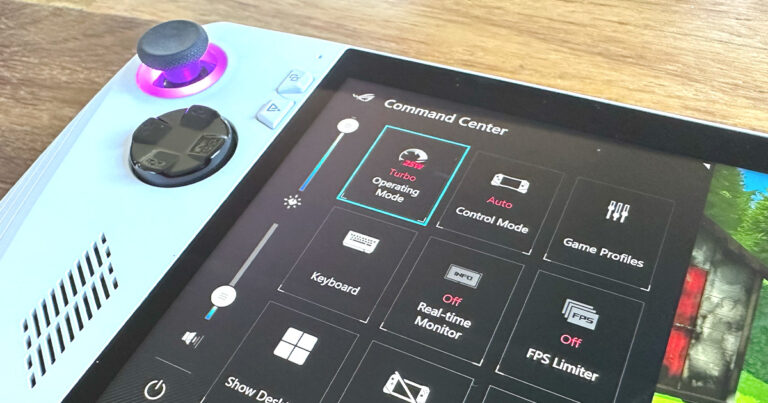
In my short time with the ROG Ally, it was almost impossible to get a reliable indication of everyday battery life. This is due to the fact that the device wouldn’t sleep when it was told. Again, this is a problem I’ve experienced on and off with Windows laptops but it was extra frustrating with the ROG Ally.
I’m used to pushing the power button on my Nintendo Switch, resting it on my bedside table and nodding off. When I wake, I usually pick up where I left off with the knowledge that I should probably give the Switch a bit of juice if I want to make it through the rest of the day.
The ASUS ROG Ally offered no such assurance. I would regularly leave it with an almost full battery only to wake up to a completely dead device. As it typically lived in my home office, I didn’t know what was up, until I took it to bed one night and my partner complained the next morning about its tendency to throw an RGB rave in the wee hours of the night. So that’s where the battery went.
ASUS eventuAlly patched this bug out with the ROG Ally. Given my prior experience with Windows laptops, I had almost zero faith this patch would solve the problem but that it did. What I was left with still wasn’t all that impressive. I averaged roughly 90 minutes in Performance mode, and less in Turbo Mode. Silent Mode lasted a lot longer but even that struggled with more intensive games.
Such is the state of handhelds these days. The Nintendo Switch can last around six hours without a charge if you’re playing a twee indie game that doesn’t require too much grunt. But it can drain in about two hours if you’re in a hardcore Tears of the Kingdom session.
Still, 60 to 90 minutes with the ROG Ally’s highest settings is pretty poor. It reduces the appeal of being able to play high-end games anywhere you want. You could barely fly from Sydney to Melbourne without needing to charge the ROG Ally if you want to take full advantage of its powerful specs.
Conclusion: Is the ASUS ROG Ally worth it?
I’ve gone in circles trying to decide exactly who the ROG Ally is for. The Steam Deck offers handheld PC gaming at a more reasonable price on a Linux system skinned with Valve’s incredibly user-friendly interface.
The Nintendo Switch is the Nintendo Switch. I mean, there’s not much more to it. You download a Nintendo Switch game or buy one from your local video game merchant and you’re good to go, my friend.
True enthusiasts will be able to bend the Steam Deck to their will. Casual modders and PC gamers can do that with the ASUS ROG Ally too, but they’ll also have to deal with a buttload of troubleshooting and maintenance. And those who prefer no-nonsense handheld gaming for the masses probably already own one or two Nintendo Switch consoles.
Dive another layer below that, and you’ll find the mobile gamers, who are currently enjoying games such as Diablo Immortal with the same device they use all day every day to scroll TikTok, call grandmothers and send dumb memes to group chats.
All of this is to say, the ROG Ally simply isn’t friendly enough to dethrone the layman's Switch, or even the hardcore gamers’ weapon of choice, the Steam Deck. Which leaves it in a weird spot alongside the more inventive start-up Ayaneo.
Related Articles




